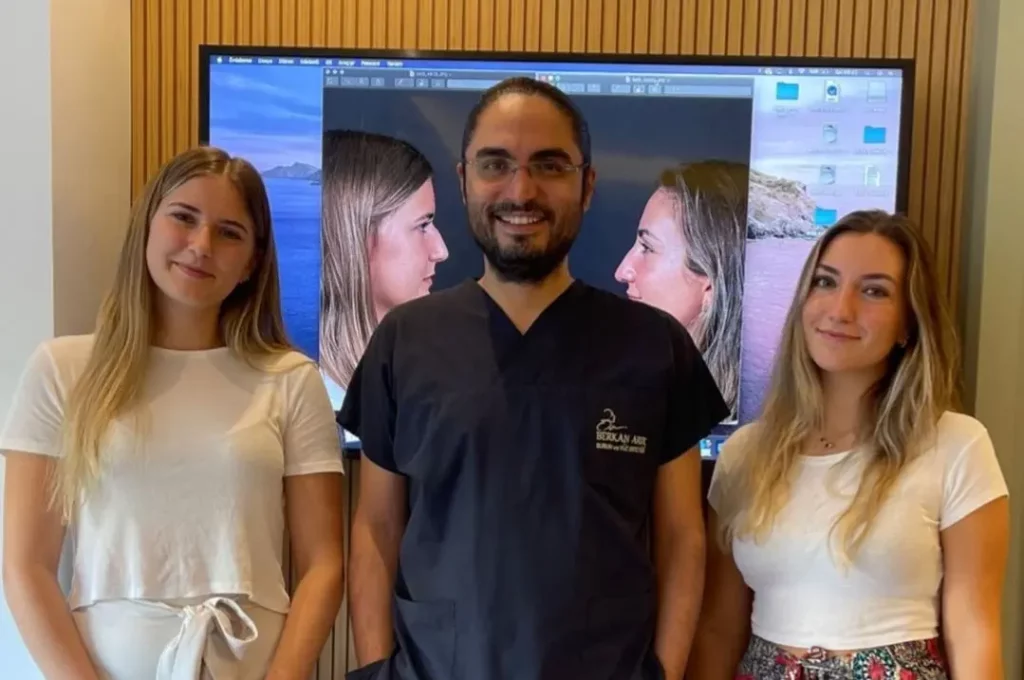
BEFORE RHINOPLASTY
It is very important to identify the problems in the nose with a detailed examination before rhinoplasty. The patient must fully express their expectations and problems related to their nose to the doctor. The doctor should listen well to the patient while planning the surgery and provide healthy guidance. Achieving a common understanding between the patient and the doctor about the ideal nose shape suitable for the patient’s facial structure is crucial in successful rhinoplasty. Providing everyone with the same nose shape in rhinoplasty is not a correct procedure. Rhinoplasty must be unique to the person’s facial structure and lines. Taking photos before the surgery and working on them on a computer to show the estimated changes on the person’s nose and face will be a guiding factor for patients to have a healthy idea. Rhinoplasty Before and After is very important.
WHAT SHOULD I PAY ATTENTION TO BEFORE RHINOPLASTY?
Patients should be healthy 10 days before rhinoplasty. Surgery may need to be postponed for patients with active cold sores, flu, cold or respiratory infections. It is not recommended to smoke, drink alcohol, green tea, herbal teas, energy drinks, or eat cherries, ginger, turmeric, garlic, onions, as they have blood-thinning effects. It is necessary to avoid using drugs without consulting your doctor 10 days before rhinoplasty unless it is necessary. Painkillers such as aspirin and similar drugs, as well as drugs that increase bleeding risk, such as blood thinners, must be discontinued. If you have heart problems, hereditary bleeding disorders, hypertension, thyroid/goiter problems, liver problems such as hepatitis, neurological problems such as epilepsy, and rheumatic problems; you must inform your doctor before rhinoplasty.
SURGERY PROCESS
Rhinoplasty takes about 3-4 hours under general anesthesia. Patients only need to stay overnight in the hospital after the surgery. Rhinoplasty does not cause bruises, as the bones are treated without breaking them using piezo technology, and applying ice every hour is sufficient for any minimal swelling that may occur. Pain is usually not present after nose surgery, and simple pain relievers are enough in case of minimal pain. There are no restrictions on eating or drinking after the surgery, and soft foods are preferred in the early stages to increase patient comfort.
DOES A TAMPON GO INTO THE NOSE AFTER SURGERY?
Special porous silicone tampons are placed inside the nose after rhinoplasty. These tampons are removed during the bandage removal on the 7th day after surgery. Due to the porous structure of the silicone tampons, breathing problems are at a minimum level.
POST-RHINOPLASTY PERIOD
- The bandages are removed 7 days after the rhinoplasty.
- Patients can return to their work or social life comfortably 7 days after the rhinoplasty.
- In the first months after the rhinoplasty, swelling may cause the nose not to show its full shape and it may take 6 months to 1 year for your nose to take its final form. It is very important for patients to be patient during this period.
- Regular check-ups are to be made by your doctor at 1 month, 2 months, 6 months, and 12 months after the rhinoplasty.
PROCESS FOR PATIENTS COMING FROM ABROAD OR OUTSIDE THE CITY
For patients from abroad or outside the city interested in rhinoplasty, we conduct an online preliminary video consultation prior to the surgery. In this way, we can answer any questions you may have and assess your expectations. We require patients who choose us for rhinoplasty from abroad or outside the city to be present at our clinic at least one day before the surgery for a detailed examination and laboratory tests. We can arrange airport transfer services for interested patients. If you don’t have a place to stay, we can offer suggestions from among the hotels we have agreements with. Patients who have their bandages removed on the 7th day after nose surgery can safely take an international or domestic flight on the 8th day without any issues. You can review our Rhinoplasty packages


